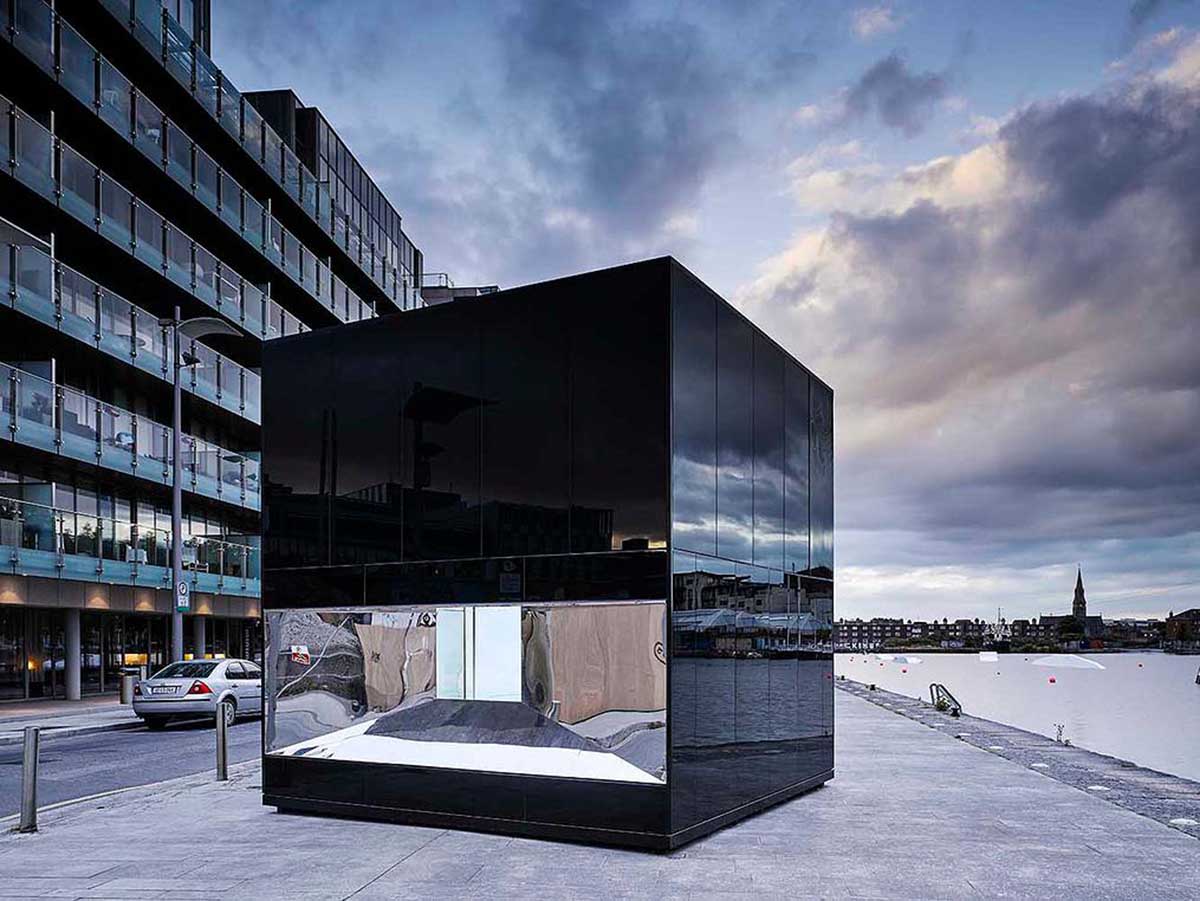Submitted by WA Contents
This ’’cube’’ rewrites the renewable energy methods as a new highly-mirrored object in any location
United Kingdom Architecture News - Jul 03, 2015 - 12:53 10150 views

all images © De Siun Scullion Architects
Dublin-based architecture practice De Siun Scullion Architects designed a self-sufficient installation titled ''5Cube'', which directly links between renewable energy and demand. The project reflects itself as mirrored-object in any location by taking into consideration some renewable sources like solar power, wind power and in turn tidal energy, wave energy and biomass fuels.
The 5Cube is the result of an open competition in 2013, titled ‘Imagine Energy’, which sought proposals that would highlight the link between renewable energy and demand. ''The starting point is the volume of oil consumed in Ireland per day and divides that into a smaller portion of time, in this case 5 minutes worth of oil consumption, which relates to 473 barrels, or a 4.2m cubic volume. The ambition of the installation is to make statistics both physical and tangible'' expains De Siun Scullion Architects.

and the studio defines its design approach as follows; The box glows internally – powered by roof mounted photovoltaic panels, energy efficient LED lights illuminate a mirrored interior. On one, an opening into the cube reveals a giant kaleidoscope reflecting the sky above to form a giant globe, with a link to sources of more information. To the opposite side, a giant periscope reflects a clear view of the sky overhead - providing a constant reminder of the powerful skies above us and our constantly changing weather - the source of so much of renewable resources: solar power, wind power and in turn tidal energy, wave energy and biomass fuels.

The 5Cube is designed so that it can dismantled and relocated easily in any location; no foundations are needed due to an ingenious internal ballasting solutions using sand that can be reused elsewhere upon completion. The idea is that the installation might appear in various public places literally overnight, and disappear again shortly thereafter. It is also self –sufficient in its power consumption via the rooftop photovoltaic panels.










> via De Siun Scullion Architects
